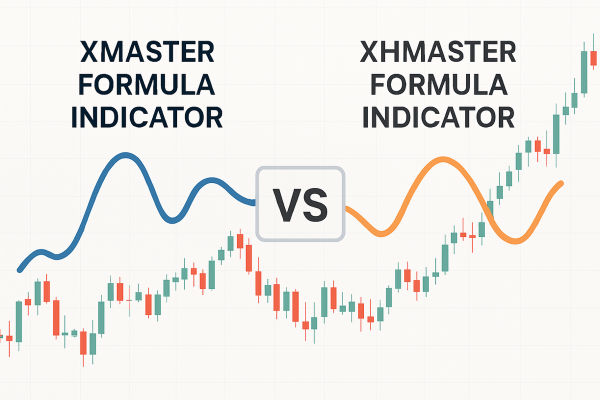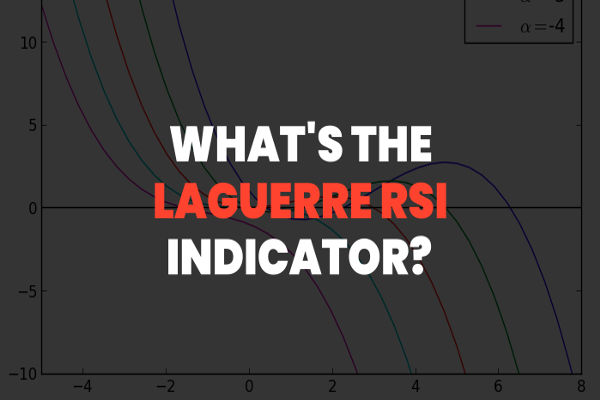Crypto scalping is a high-frequency trading technique that seeks many small profits by entering and exiting positions within minutes or seconds, and it can be profitable where liquidity, execution speed and disciplined risk control are present.
The following article will explain why scalping works in crypto markets today, the practical infrastructure and rules you must have in place, the tactical templates that professional scalpers use, and how to measure and refine performance.
Why Crypto Markets Are Conducive to Scalping Right Now

Crypto markets remain attractive to scalpers because overall trading activity and persistent volatility create frequent micro-opportunities. Market structure in 2025 continues to show meaningful daily volume and periods of elevated realised volatility, which is the raw material scalpers need.
For example, Q1 2025 average daily trading volume across major venues was reported in the low hundreds of billions of US dollars, and realised 30-day volatility for Bitcoin has been in the tens of percentage points range, creating intraday movement that scalpers can exploit.
Key practical implications:
Higher liquidity in major pairs such as BTC/USDT and ETH/USDT reduces spread and slippage for small, rapid trades.
Funding rates on perpetual futures remain low on average, but they fluctuate and should be included in the cost of leveraged scalps.
Pre-Launch Setup: Building a Robust Crypto Scalping Engine
A scalper's success depends on preparation. The steps below are non-negotiable.
1. Exchange and Pair Selection
Choose exchanges that combine deep order books, low latency and a predictable fee schedule. Tiered maker/taker fees are standard.
For many active traders, exchanges that offer maker and taker fees around 0.10% and aggressive rebates for high volume are preferred. Balance cost versus reliability and regulatory coverage when choosing a primary venue.
2. Technical Infrastructure
Your charting and execution stack must minimise latency. Recommended elements include:
A stable, wired internet connection and a reliable VPN if needed for redundancy.
A trading terminal that supports sub-minute charts, hot keys and direct order book visualisation.
API access or a bot engine if you plan to automate entries and exits.
3. Fee, Funding and Cost Awareness
4. Risk Limits Before Launch
Define, document and commit to:
Maximum risk per trade as a percentage of active capital.
Daily loss cap that stops you for the session.
Maximum number of trades per hour or per session to limit fatigue.
Signature Crypto Scalping Tactics

Below are five practical tactics you can adapt and test. Each tactic includes the basic premise, the execution rules and the risks to monitor.
1. Range-Bound Scalping: Buy Low, Sell High Within Micro Ranges
Premise:
Identify stable intraday ranges and take the small mean reversion moves from support and resistance.
Execution rules:
Trade near validated short-term levels on the 1-minute or 5-minute chart, place a tight stop below support and a modest profit target.
This is effective when ranges are visible and volume confirms bounces.
Risks:
Range breakouts can turn into fast losses if stops are not honoured.
2. Breakout Scalping: Capture the First Burst of Momentum
Premise:
Enter when price breaks consolidation with above-average volume on the micro timeframes.
Execution rules:
Use a small stop just below the breakout candle low, take quick profit if momentum stalls, trail if momentum extends.
Risks:
False breakouts and liquidity vacuums can create slippage.
3. Order-Book and Spread Extraction: Micro-Edge From Market Microstructure
Premise:
Exploit predictable micro-patterns in the bid-ask spread and visible order book imbalances.
Execution rules:
Watch for repeated large limit orders, purposefully place limit orders to capture spread when market depth is stable, and use immediate cancellation rules if book dynamics shift.
Risks:
Latency to cancel orders, stealth algorithmic sweeps and sudden cancels expose limit orders to adverse selection.
4. Price-Action Micro-Reversals: Indicator-Light Scalping
Premise:
Use minimal lagging indicators and pure price action to detect very short overbought or oversold states on 1-minute candles.
Execution rules:
Combine fast RSI or momentum on 1-minute with a structural edge on a 5-minute chart for context, keep targets tiny and stops tighter.
Risks:
Noise and whipsaws on short timeframes increase frequency of stop outs.
5. Leveraged Perpetual Scalping: Amplify Profits With Caution
Premise:
Use low leverage on perpetual futures to increase return on small moves, but only with strict risk controls.
Execution rules:
Avoid high leverage, always account for funding rate and margin costs, and reduce position size when funding is unfavourable.
Risks:
Funding, maintenance margin and liquidation risk. Perpetual funding rates should factor into expected net return.
Execution Blueprint: From Entry To Exit
A disciplined execution blueprint eliminates guesswork. Use the following template for every trade.
Confirm macro context on a 15-minute chart.
Scan for micro setups on 1-minute and 5-minute charts.
Verify order book depth and spread.
Enter with a pre-set stop loss and an explicit profit target.
Manage live with a trailing stop or exit on signal invalidation.
Log the trade immediately.
Time-frame recommendations:
Primary: 1-minute and 5-minute for entry and monitoring.
Secondary: 15-minute for directional context.
Representative Exchange Comparison For Scalpers
| Exchange |
Typical Maker/Taker Fee (entry level) |
Notable Strength |
Consideration |
| Binance |
0.10% / 0.10% |
Deep liquidity, wide product set. |
Tiered discounts available. |
| Kraken Pro |
0.16% / 0.26% |
Strong regulatory compliance, good execution. |
Fees fall with volume. |
| Coinbase Advanced |
0.00% / 0.40% (promotions vary) |
US regulatory focus, accessible UI. |
Fee structure varies by account and promotions. |
This table summarises common fee and feature considerations scalpers should evaluate. Fee tiers and features change often, so treat this as a template for comparison rather than definitive values.
Example Scalping Trade Economics
| Item |
Value |
| Entry price |
$50,000 |
| Exit price (profit target) |
$50,150 (0.3% gain) |
| Spread and slippage cost |
0.05% |
| Exchange fees (round trip total) |
0.20% |
| Net expected return before leverage |
0.05% |
| If 3x leverage applied (gross) |
0.15% |
| Net after leverage and costs |
approx 0.00% to 0.10% depending on slippage and funding |
Automation, Bots and Execution Efficiency

Automation is often decisive for modern scalpers. Bots can:
Execute with lower latency than manual clicks.
Apply consistent risk rules without emotion.
Monitor multiple pairs simultaneously.
Automation caveats:
Systems must include safety stops, maximum drawdown limits and manual override.
Test in a simulated environment before deploying live.
Monitor for market events that can produce unexpected behaviour, such as exchange outages or extreme volatility.
Academic and industry research shows that automatic scalping systems can succeed where latency and execution discipline matter, but they require ongoing supervision and maintenance.
Cost, Funding and Capital Efficiency
Every trade must be profitable net of costs. Key items scalpers must model:
Maker and taker fees per round trip.
Expected slippage based on order size and apparent market depth.
Perpetual funding rates if using derivatives. Funding rates have been small on average in recent cycles, but they can spike and are a recurring cost for leveraged positions.
A simple break-even calculation helps decide whether a target profit is viable. If your expected gross move is 0.25 per cent but round trip fees and slippage total 0.20 per cent, the net margin may be too thin when considering the probability of execution and the expected win rate.
Mental Fortitude, Session Discipline and Review
Scalping is cognitively demanding. The rules below preserve capital and decision quality.
1. Psychological Rules
2. Session Management
3. Feedback Loop
Keep a trade journal that captures entry, exit, size, fees, slippage and the rationale.
Analyse monthly: win rate, average profit per winning trade, average loss per losing trade, net P&L after fees. Use these metrics to refine strategy parameters.
Crypto Market Specific Considerations For Scalpers

Cryptocurrency markets have characteristics that differ from equities and forex.
1. 24-Hour Trading
Markets never close, which creates both opportunities and risks. Scalpers must be especially mindful of low liquidity hours when market activity thins, because slippage increases and limit orders are more likely to be picked off.
2. News Sensitivity and Social Amplification
Prices can move swiftly on short notice due to regulatory announcements, exchange incidents or influential social media commentary. Scalpers often suspend activity during media storms to avoid unpredictable spikes.
3. Exchange Reliability and Withdrawal Risk
Choose exchanges with consistent uptime and clear treatment for maintenance and withdrawals. Account for the unlikely but possible scenario of temporary withdrawal delays or exchange incidents.
Frequently Asked Questions
Q: Is crypto scalping suitable for beginners?
A: Scalping can be attractive but it is operationally intensive. Beginners should focus on learning execution, cost modelling and disciplined risk control in a simulated environment before committing capital.
Q: Which pairs are best to scalp?
A: Focus on high liquidity pairs such as BTC/USDT and ETH/USDT initially. These pairs generally have tighter spreads and deeper order books.
Q: How do I know when fees make a strategy unprofitable?
A: Build a per-trade profit model that includes expected gross move, spread, slippage and round trip fees. If net expected return is small or negative, the setup is not viable.
Q: Should I use bots?
A: Bots are a powerful tool for scalping, because speed and consistency matter. Use bots with robust safeguards and monitor them continuously.
Q: How do funding rates affect leveraged scalping?
A: Funding rates are a recurring cost for perpetual contracts. They are often small on average but can swing, and they must be included in expected return calculations for leveraged trades.
Closing Summary
Crypto scalping is a demanding but potentially rewarding trading style when executed with careful preparation, a clear cost model and disciplined trade management.
The modern market environment continues to offer opportunities because liquidity and intraday volatility remain present in large pairs, but fees, slippage and funding costs are the constants that determine whether a tactic is profitable in practice. Use the tables and the execution blueprint in this article as a living template. Test methodically, start small, protect capital and document every trade.
Disclaimer: This material is for general information purposes only and is not intended as (and should not be considered to be) financial, investment or other advice on which reliance should be placed. No opinion given in the material constitutes a recommendation by EBC or the author that any particular investment, security, transaction or investment strategy is suitable for any specific person.






























